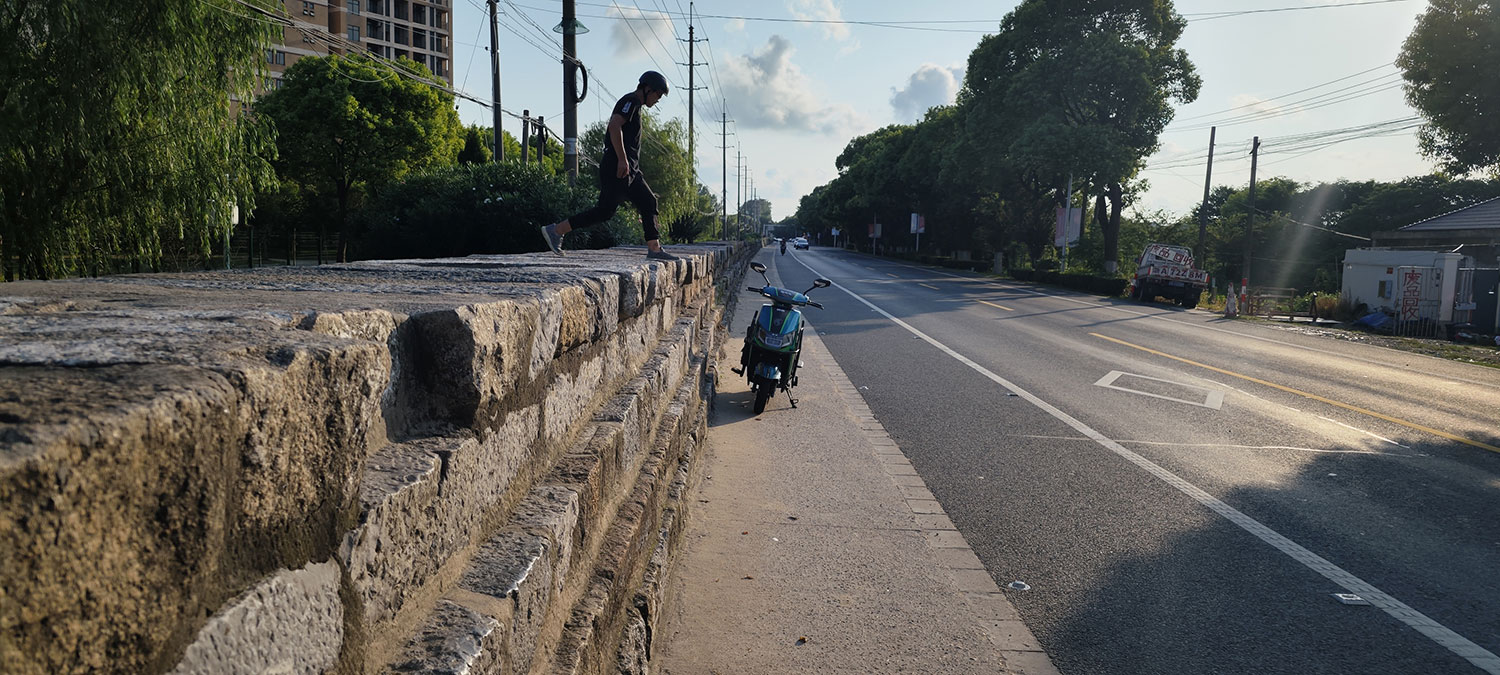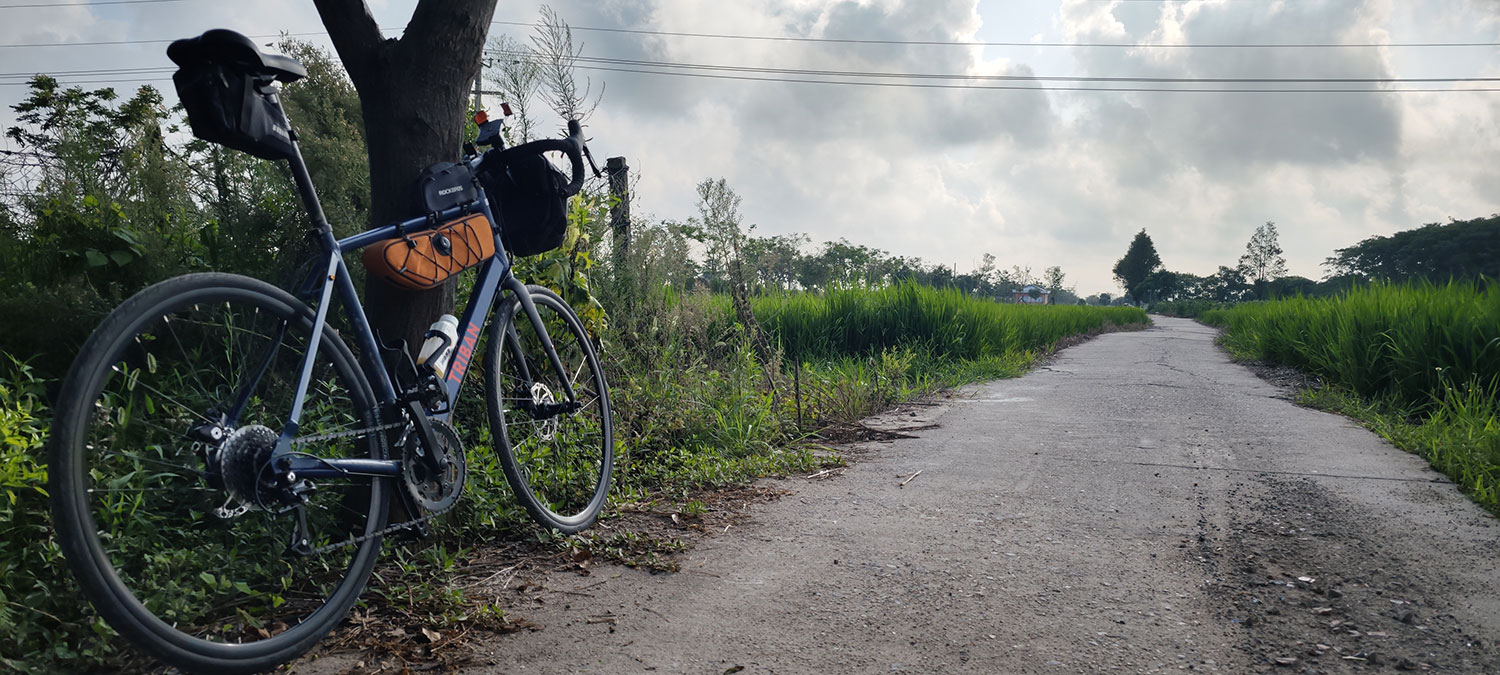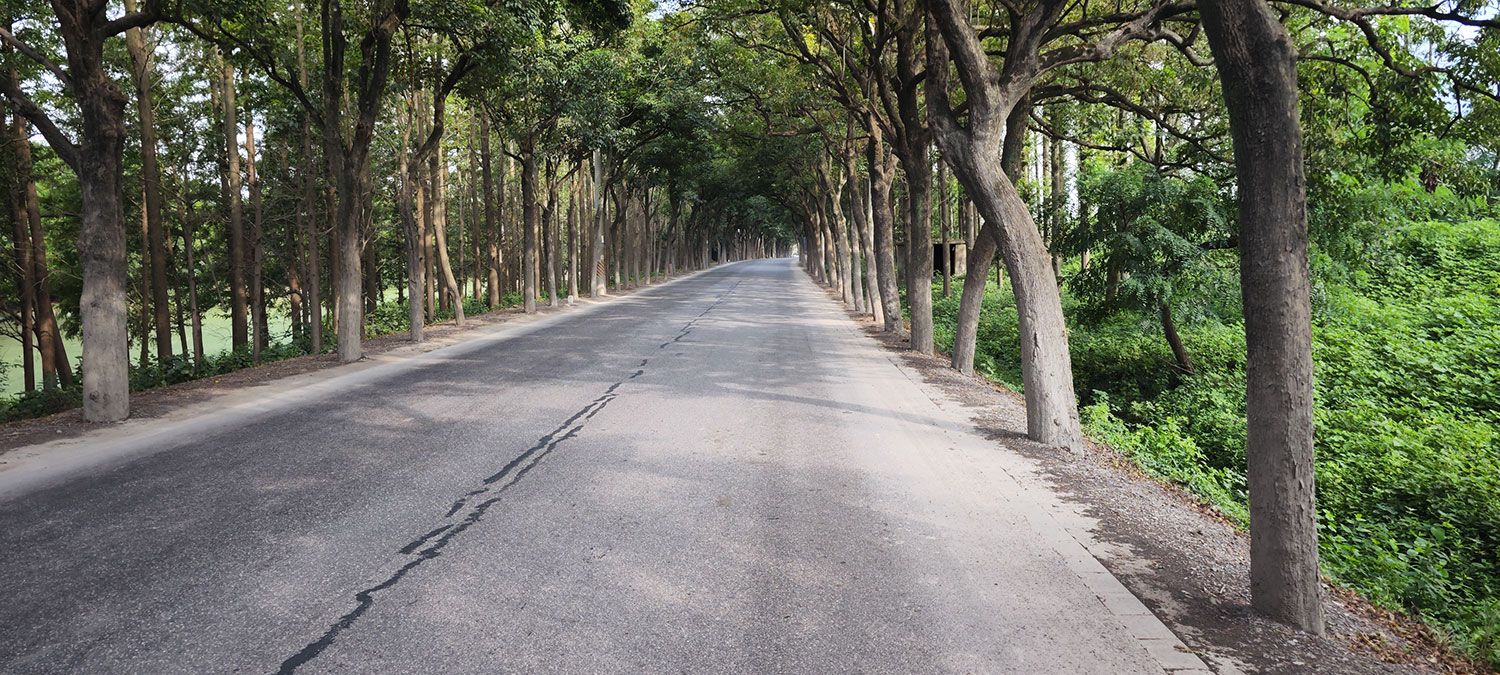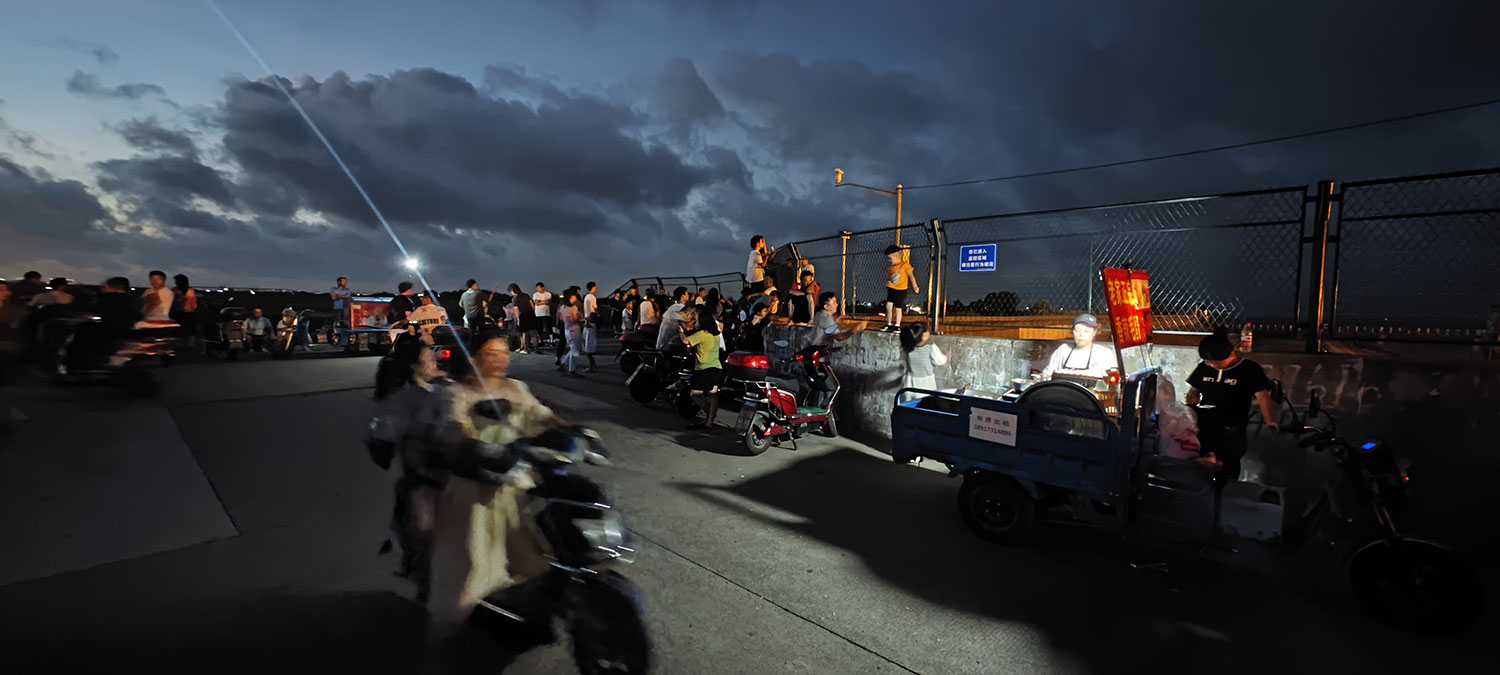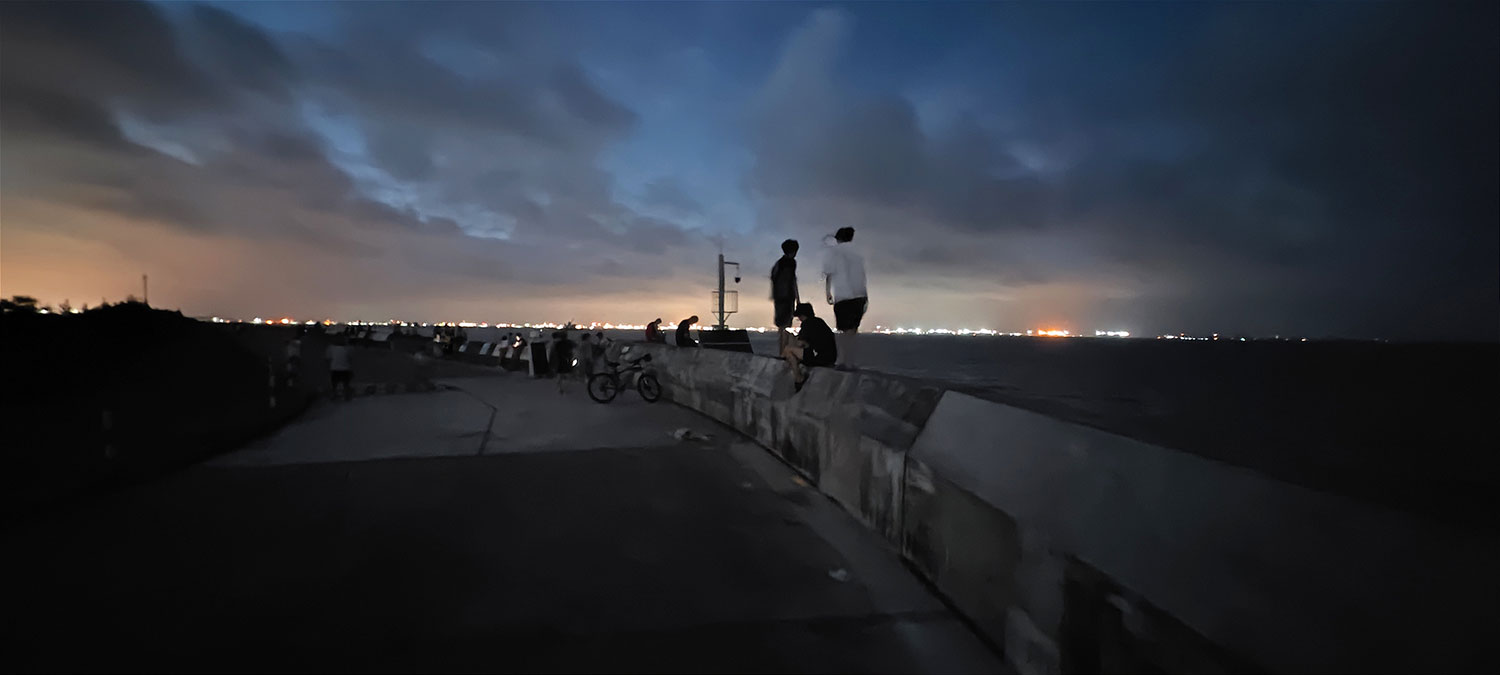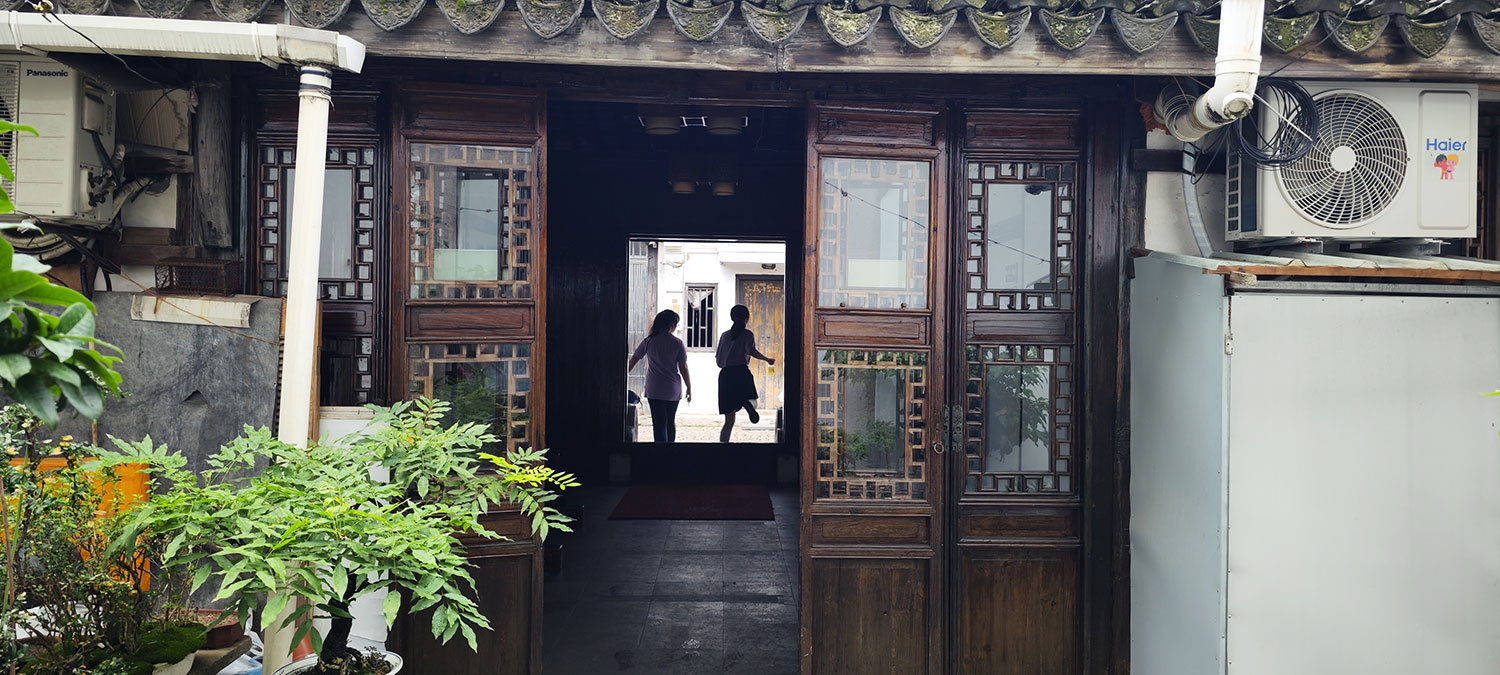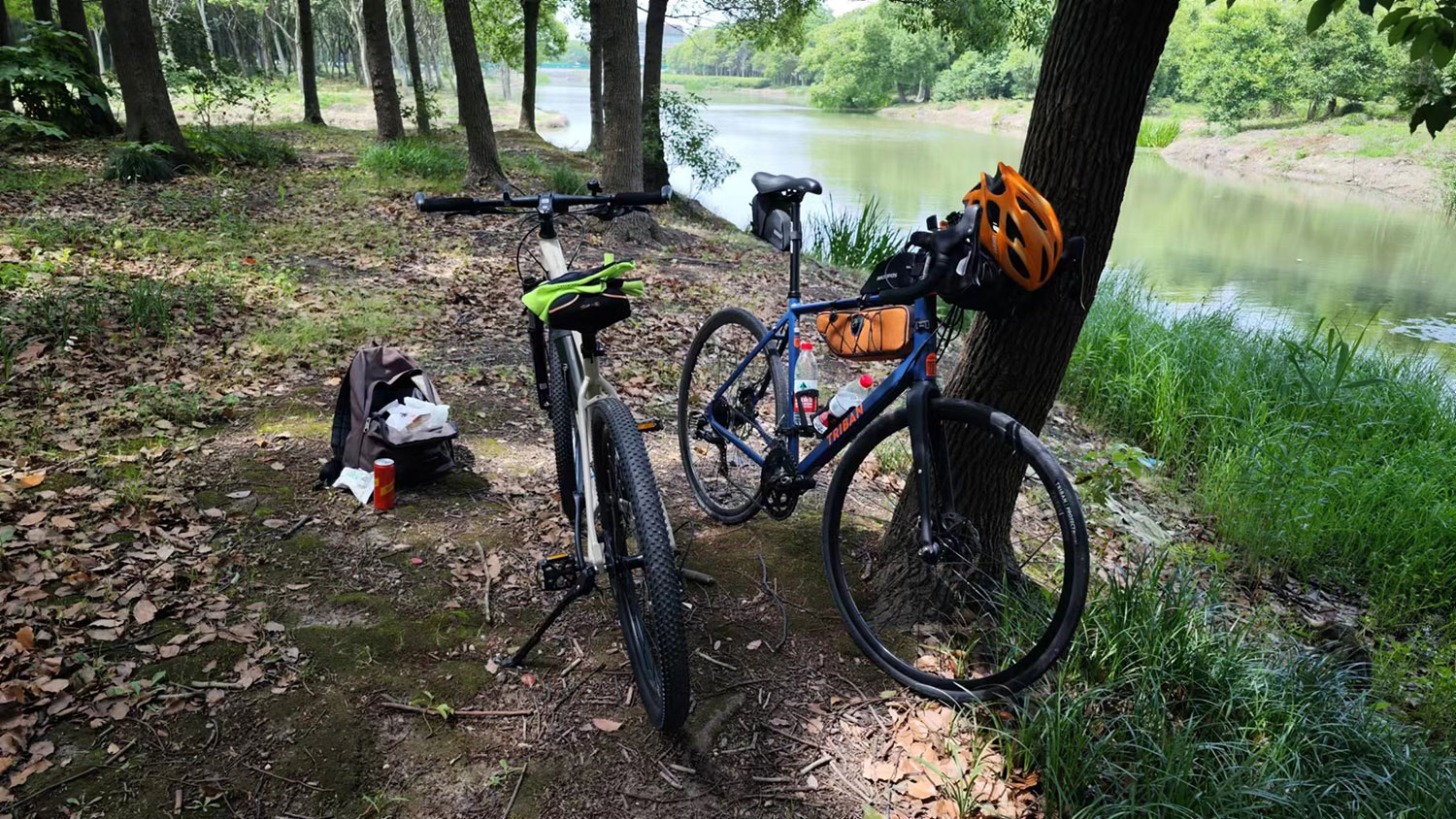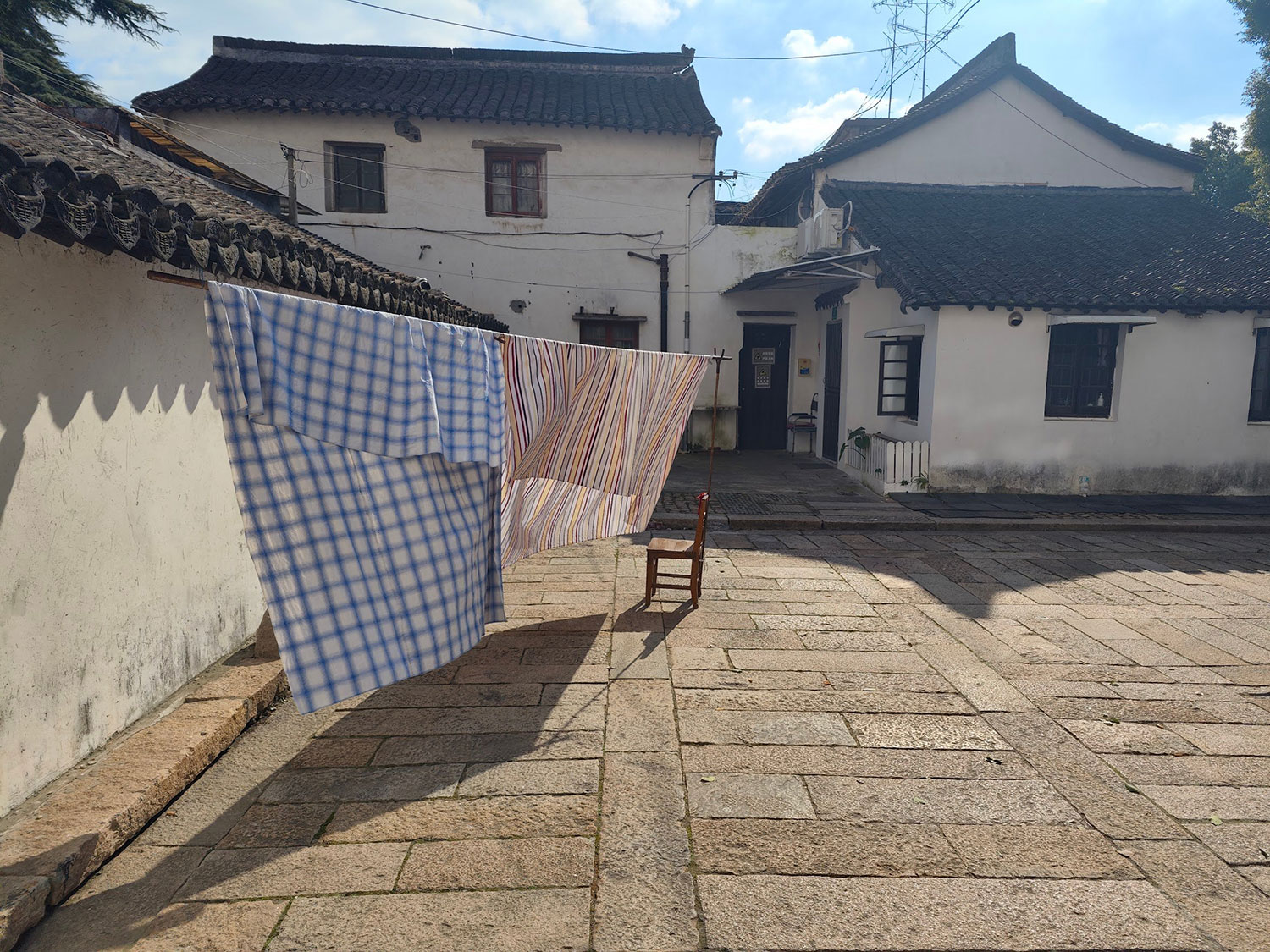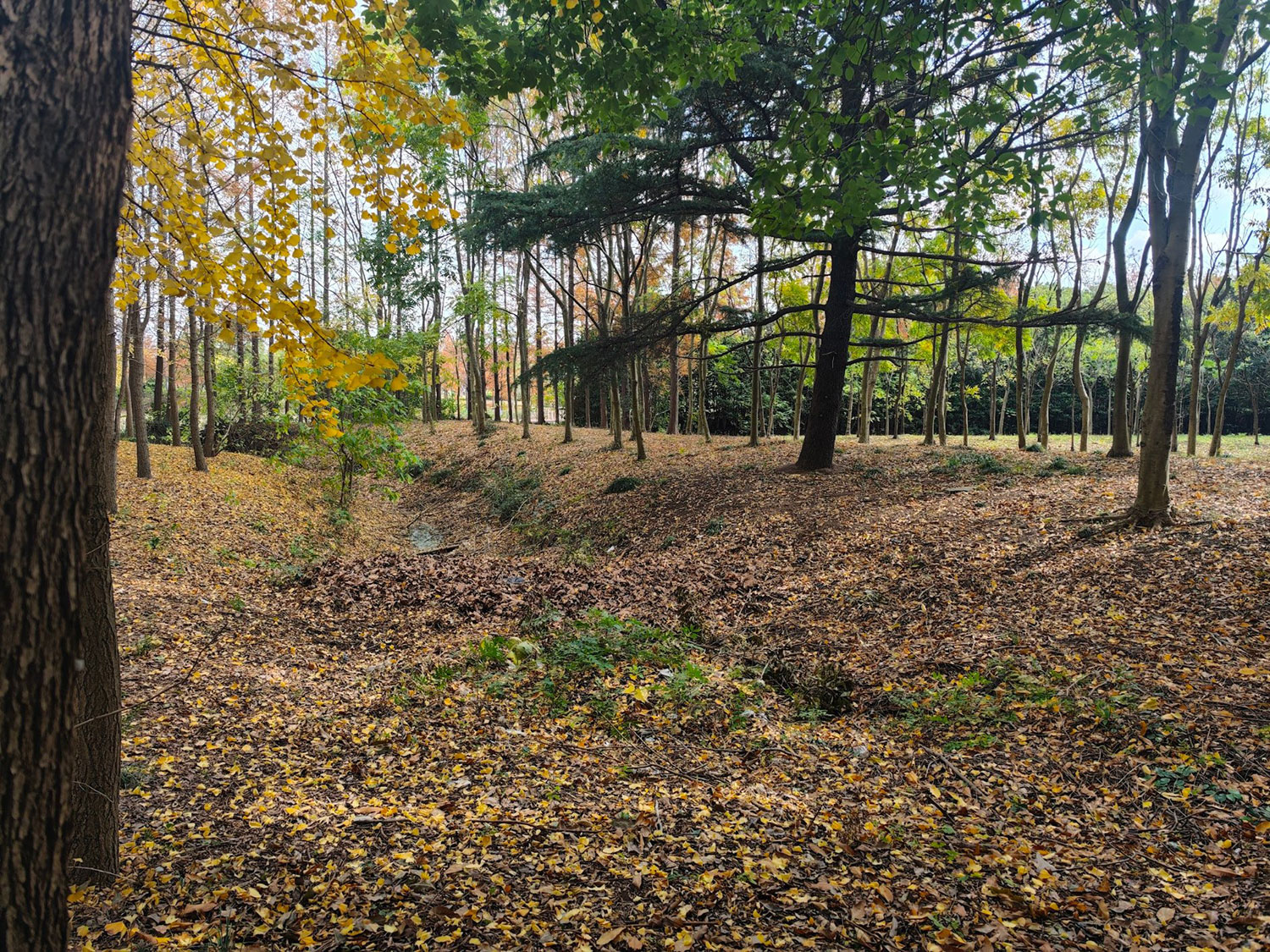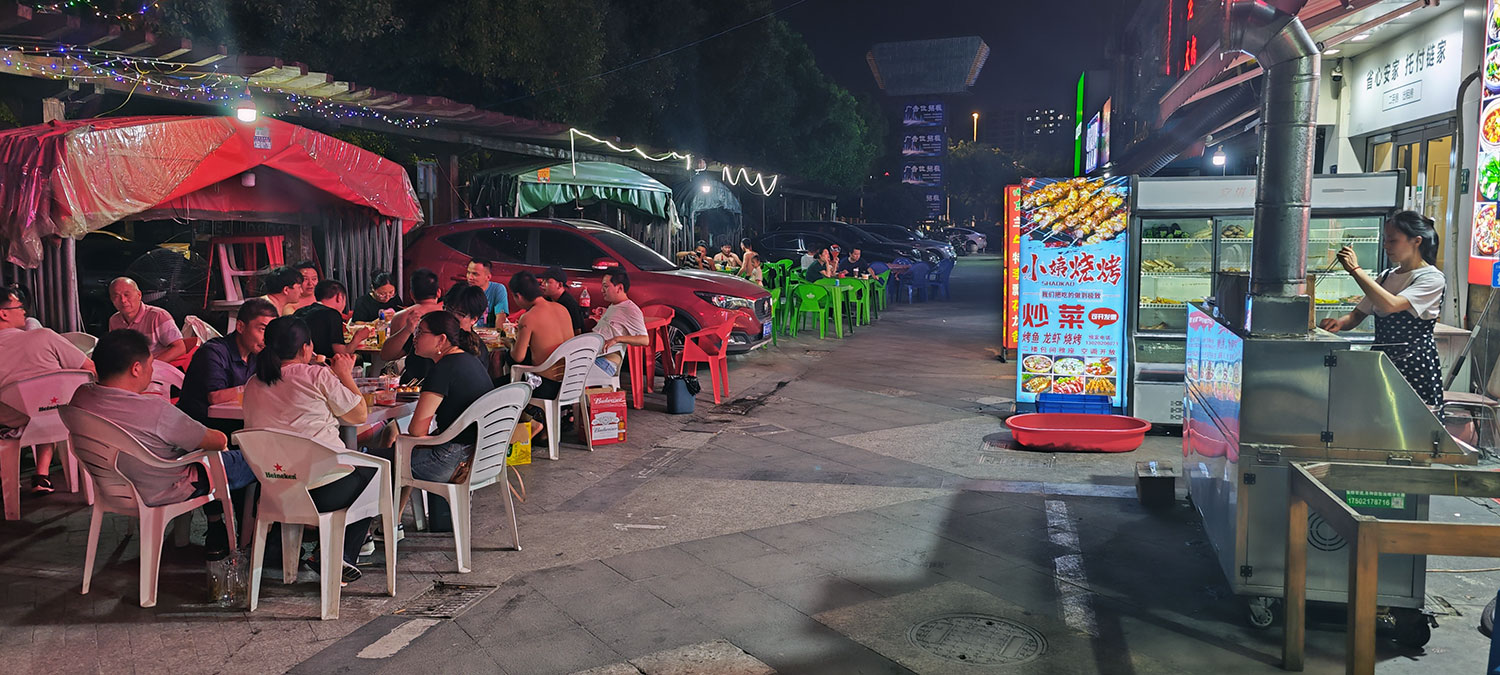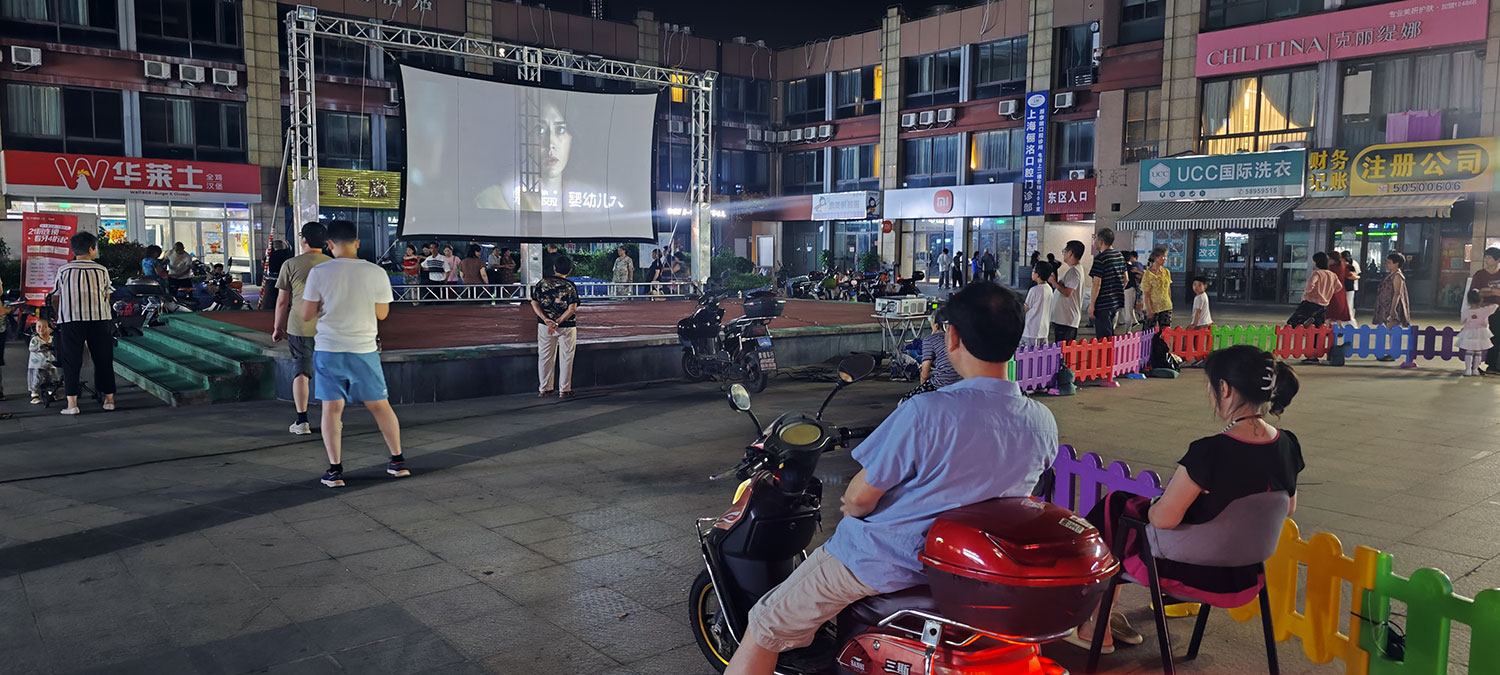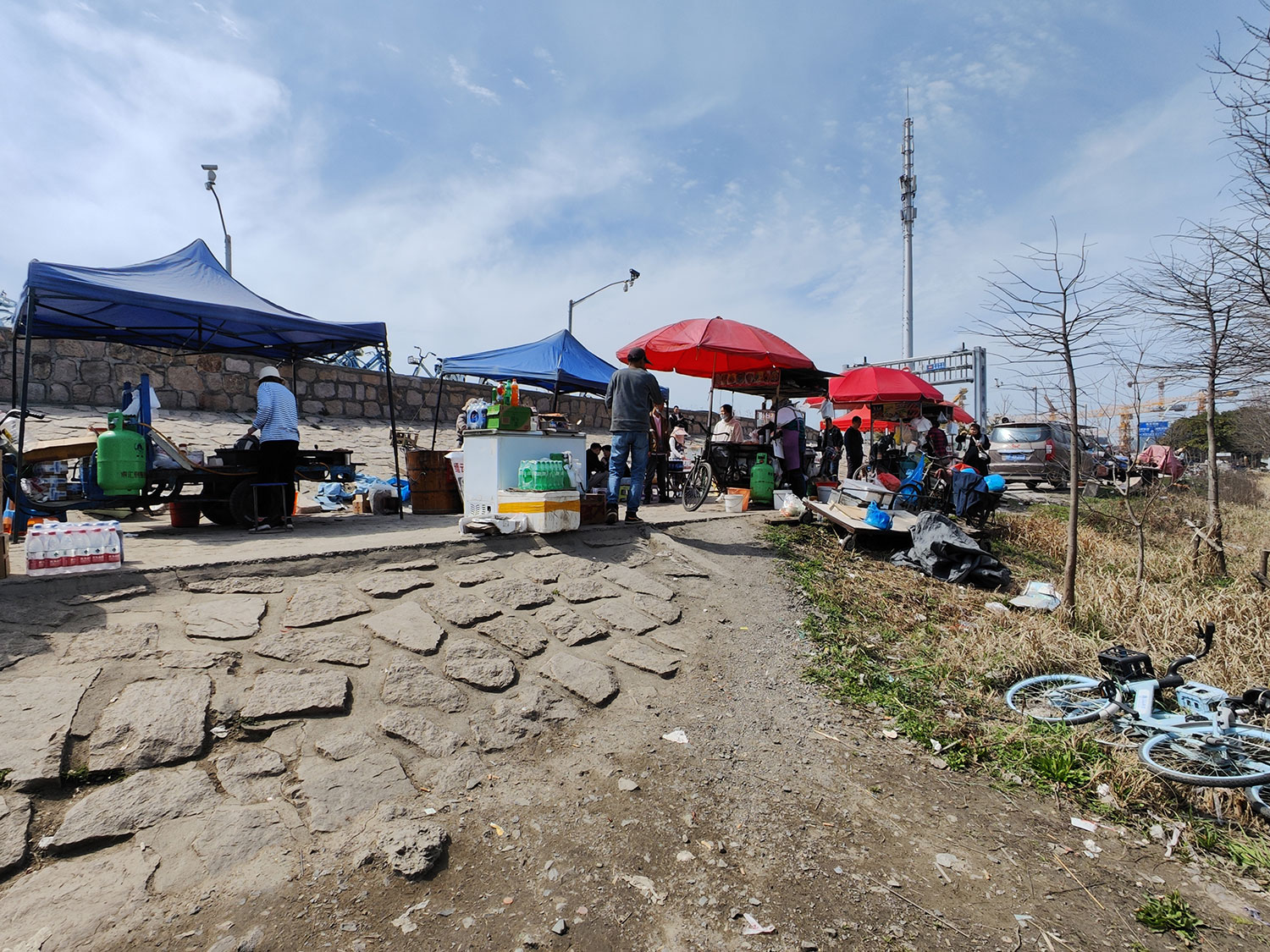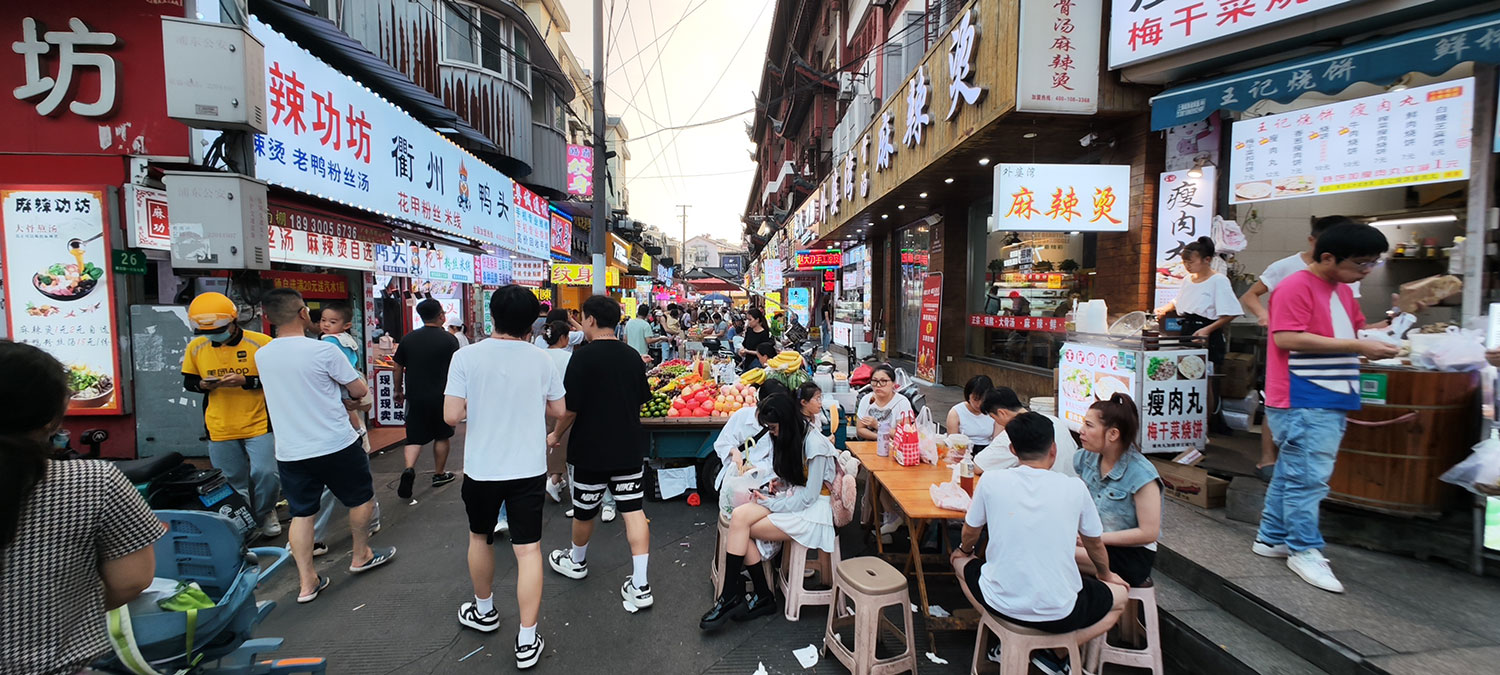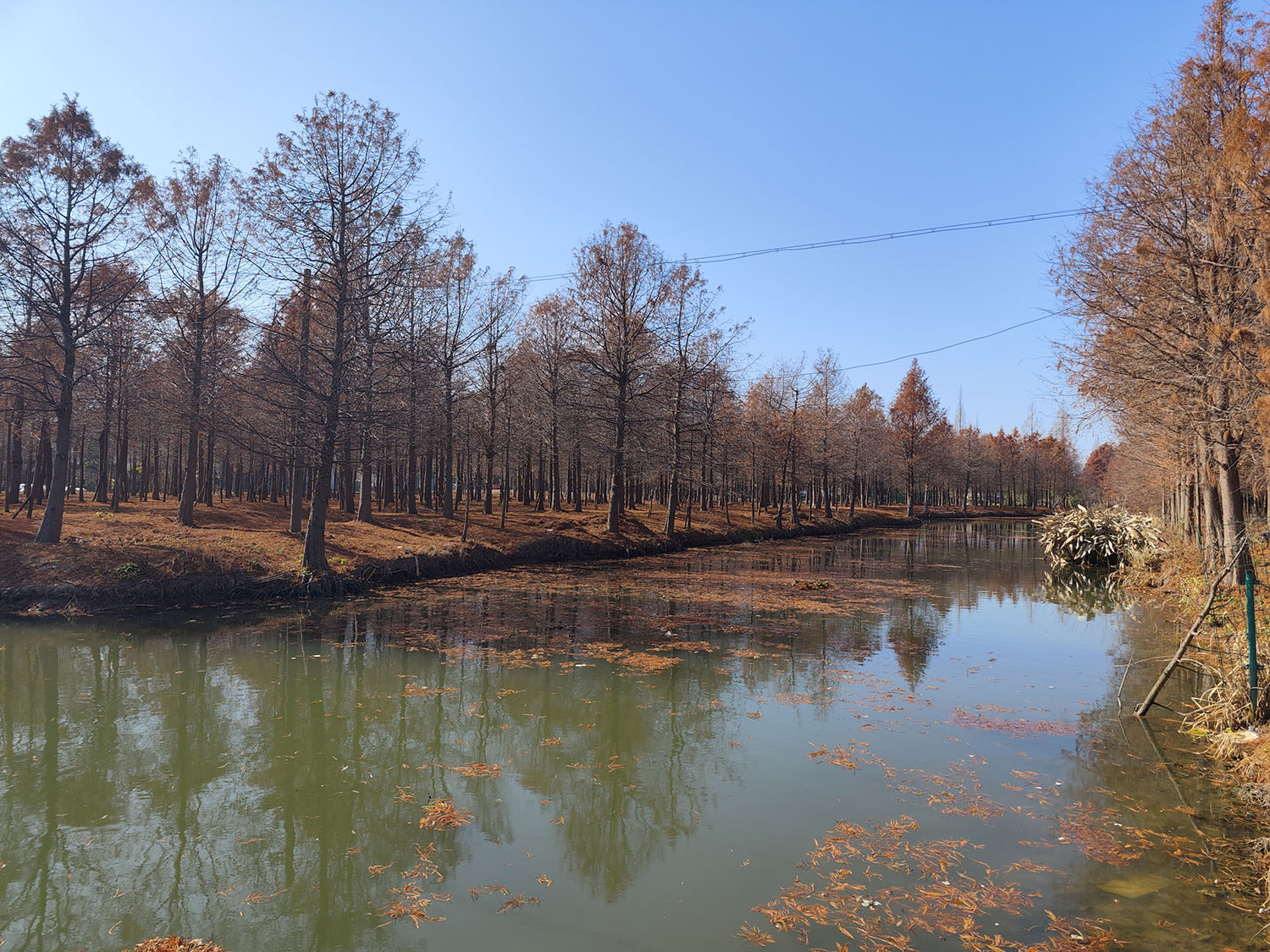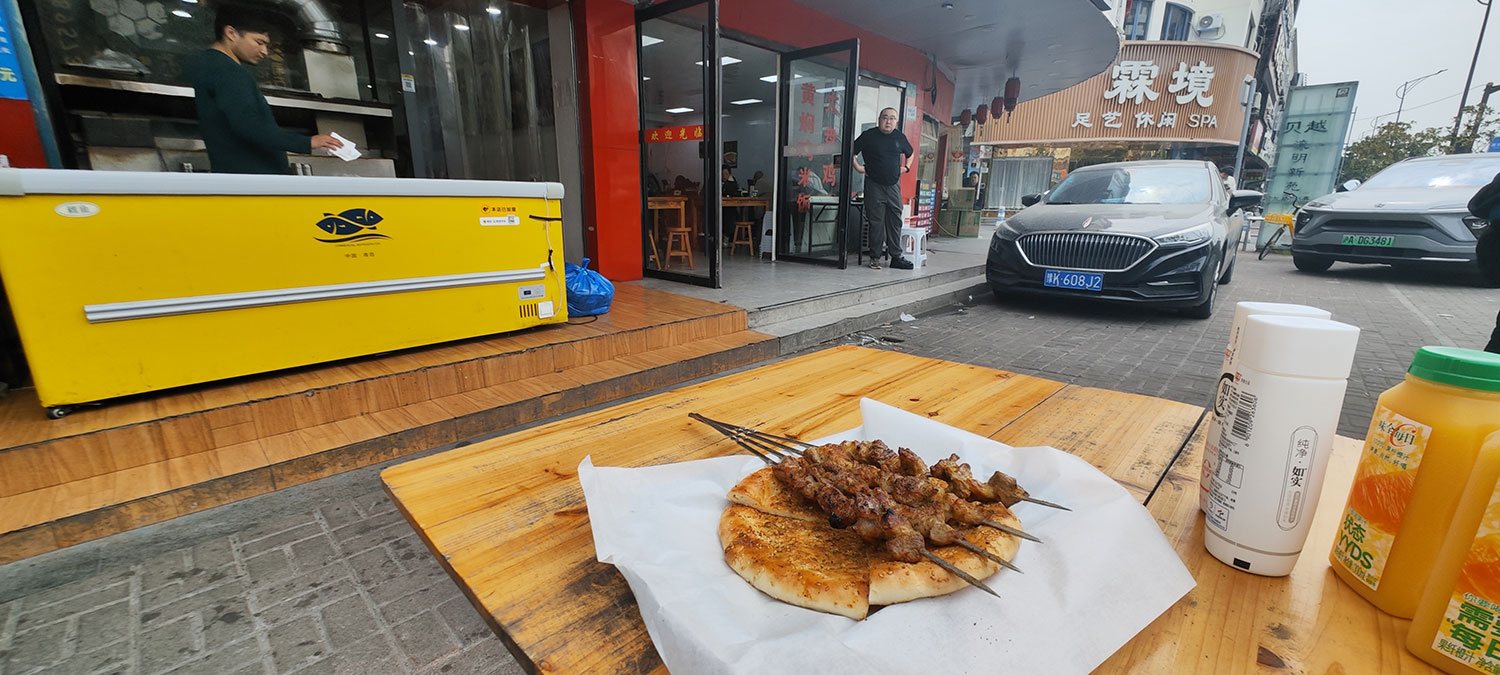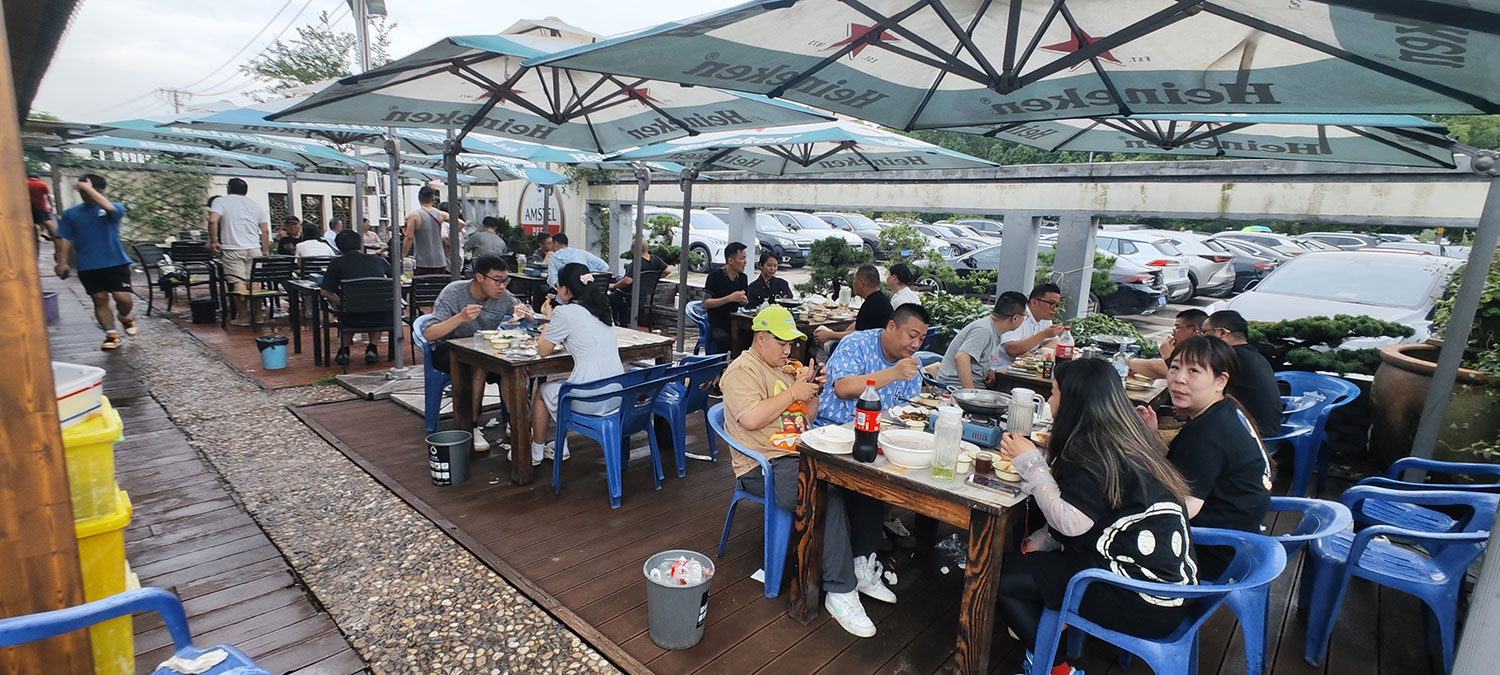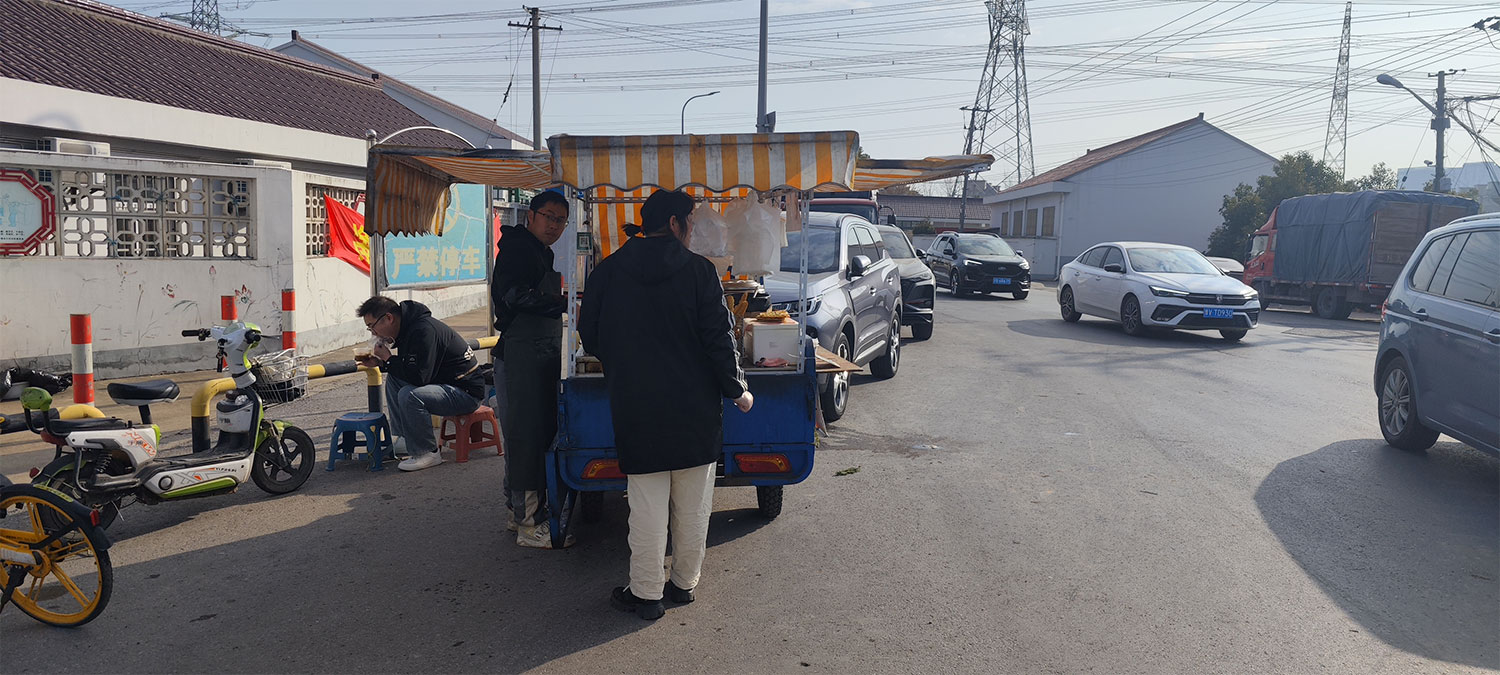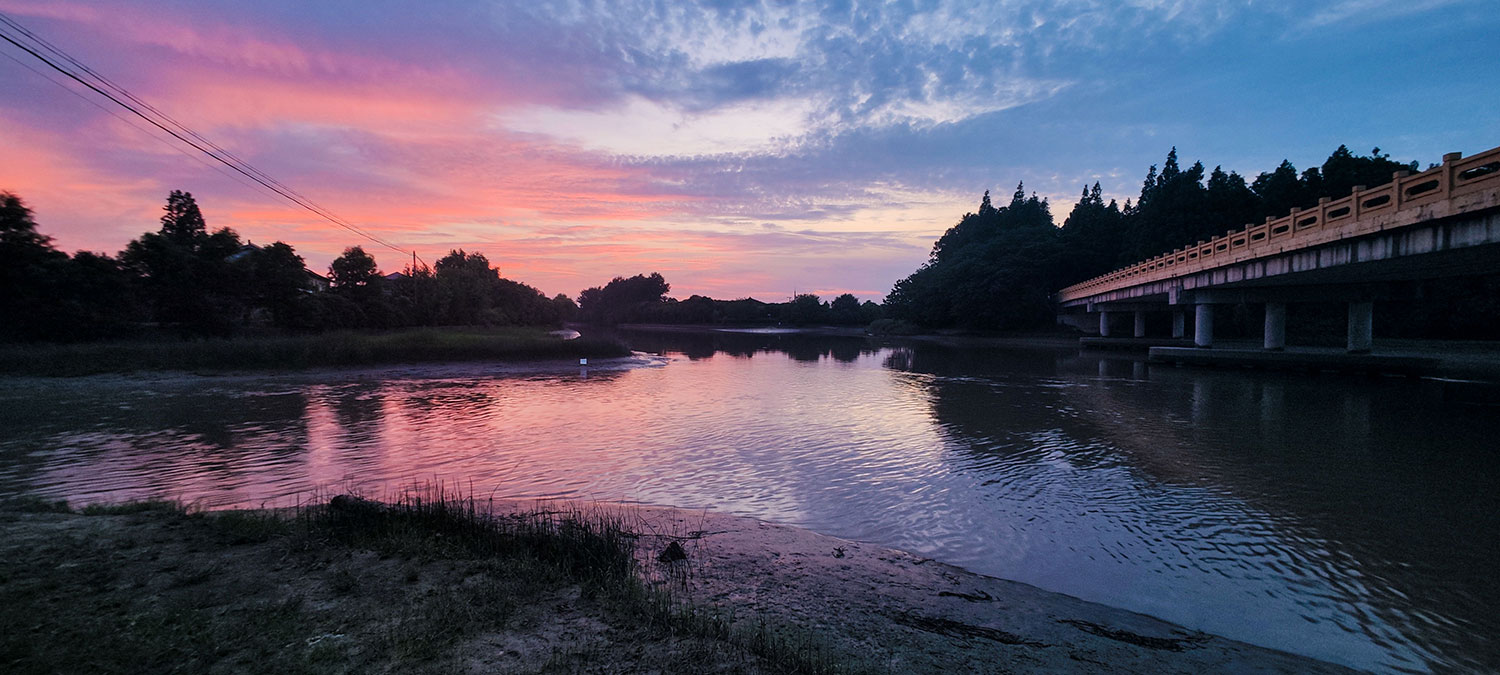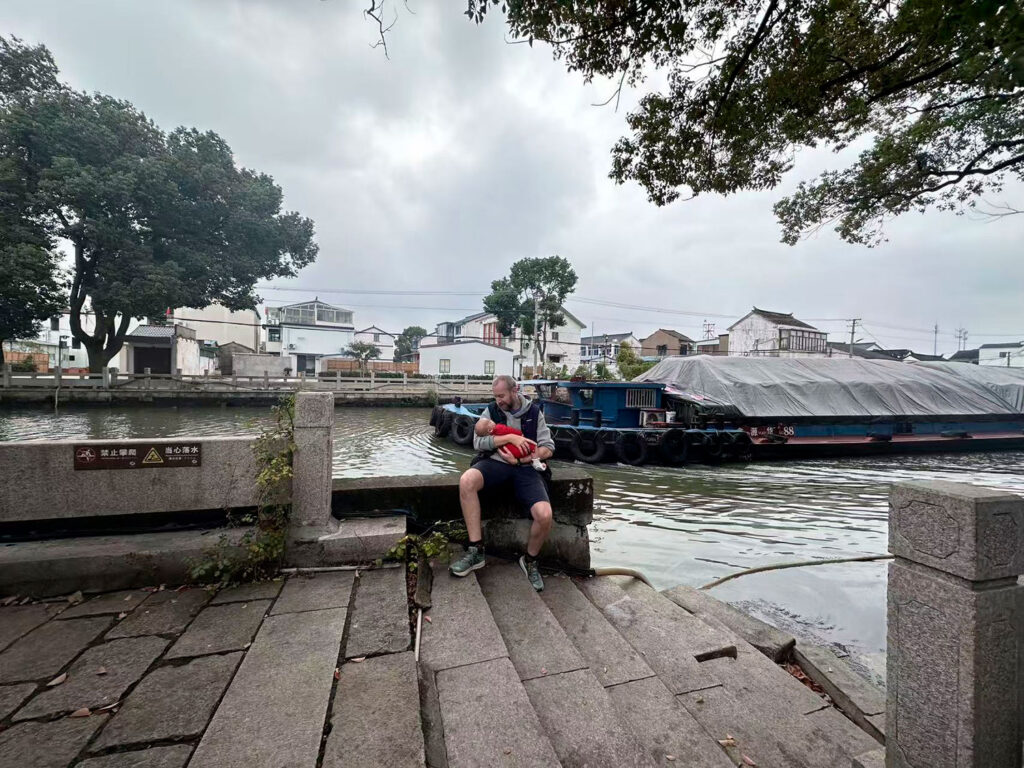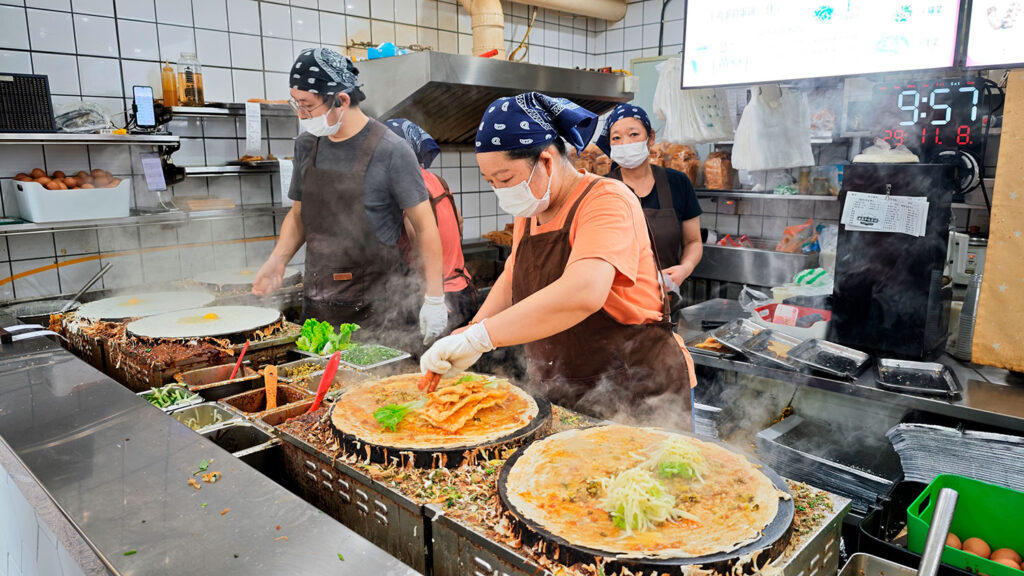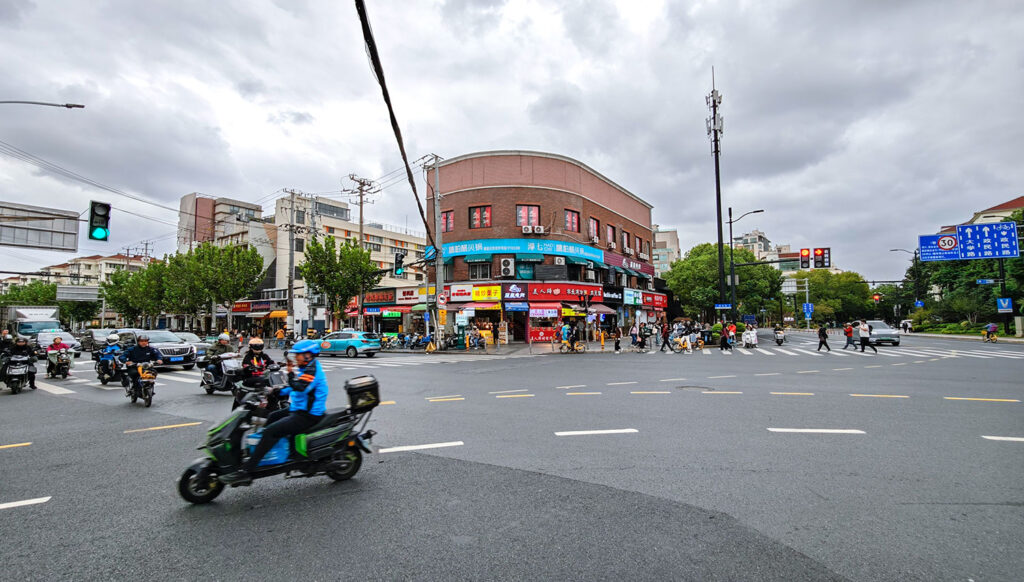Every day I cycle to work from Chuansha (川沙) through Tangzhen (唐镇) to Zhangjiang (张江), a 7-kilometer ride. And in between Tangzhen and Zhangjiang, I cross the Shanghai Outer Ring Road (外环高速公路). It’s currently under construction, with a new additional, elevated road being built on top of it — which makes the border even more visible.
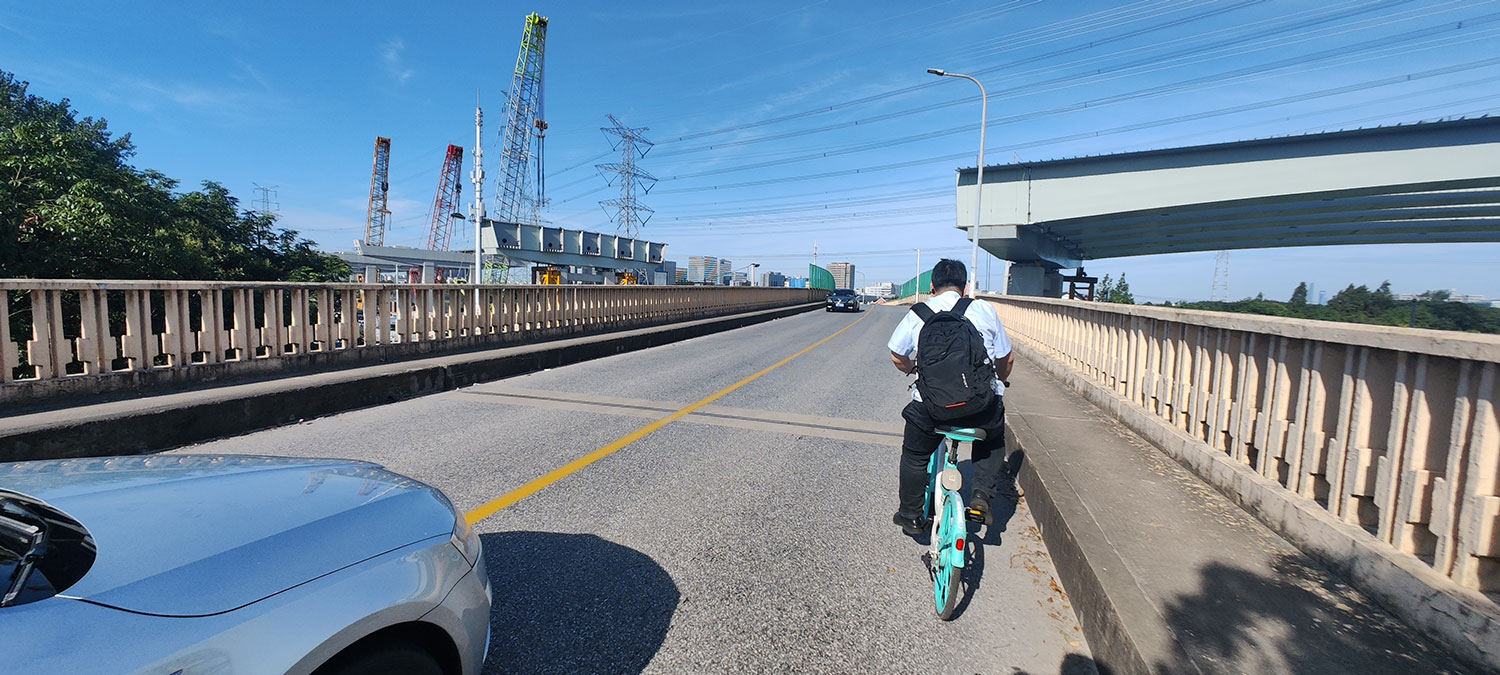
It’s not as if life suddenly changes when crossing the outside ring road, but distinct differences apply. Trucks can’t enter the inner ring, and cars with non-Shanghai license plates have time restrictions. You can also set off fireworks outside the outer ring.
There are also more subtle differences. Buildings are older, lower, rents are cheaper. There’s more space, and some empty plots are claimed by seniors who just want to grow some crops. There are fewer big brands like Starbucks or McDonald’s, and you won’t find any official Nike store here. It’s mostly private shops and 奥特莱斯 (Àotèláisī) instead: Outlets. We went to a big store that sells canceled collections, so you can get a real Adidas shirt for like 120 RMB. I tend to imagine that clothing — or rather the value of clothing — is more appreciated here than inside the inner ring. Money is more consciously spent by people with lower paychecks.

There are supermarkets but what they sell is more limited. It’s either packaged food, or the most basic vegetables or frozen meat. If you want real fresh vegetables or meat and fish, you’ll best buy them at the market. The best fruit you’ll buy by touching and observing, not just buying it from an app. Food delivery choices are much more limited and usually take over an hour to arrive, so ever since we moved outside of the ring, we’ve been cooking more at home. And despite needing to be nudged into it, I’ve been appreciating that.
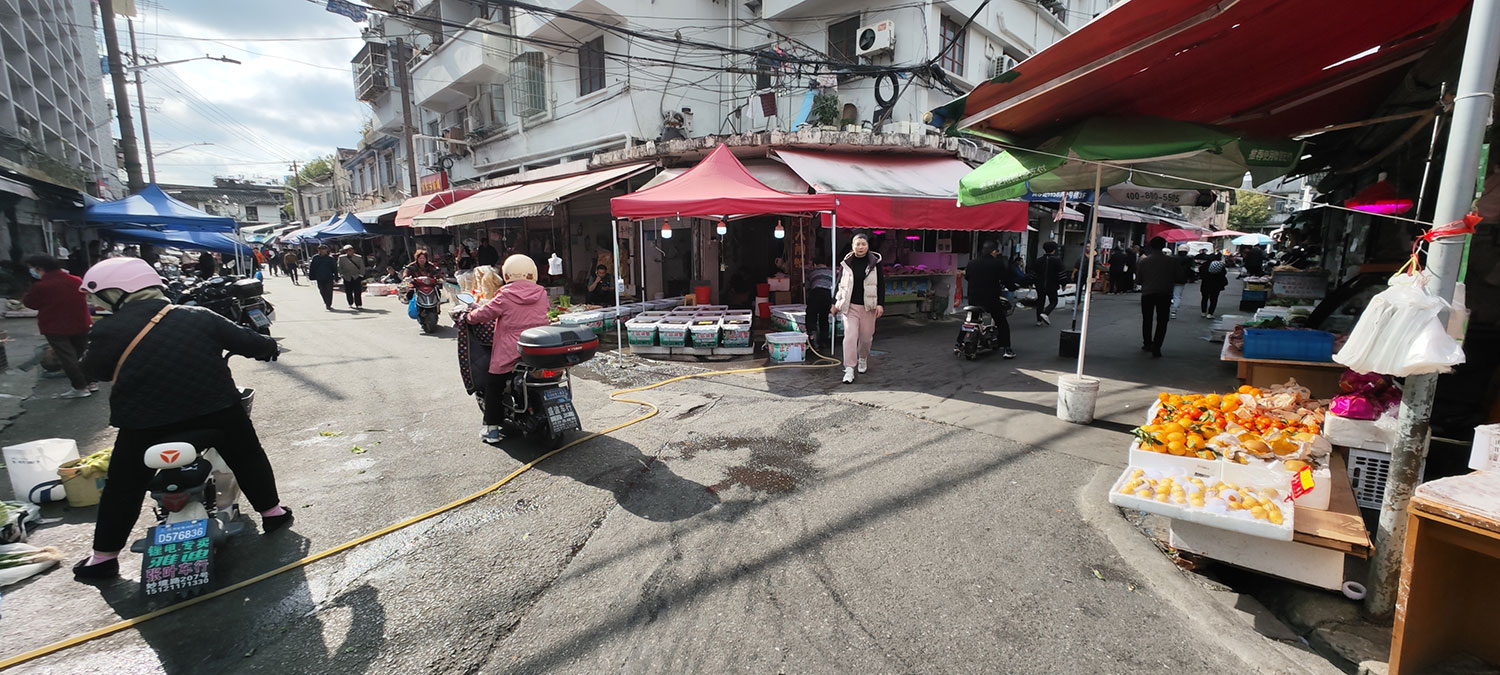
I also love the choice of restaurants here. There’s nothing fancy with pretentious plates, but family-owned restaurants where you can sit inside, or barbeque places where you can either stand or grab a cheap plastic stool to sit on. There’s plenty of street food too, or places that prepare food outside. In the winter, an old yeye brings his cart to the entrance of our compound, and then people have to bring their own oil, sesame, and rice or corn, and then queue up to get them turned into puffed rice (炸米花). Each batch is made with a loud bang, which makes me wonder if this would be allowed inside the outer ring.

There aren’t really shopping malls, but rather some pedestrian streets. The one in Zhoupu is very busy, the one in Chuansha rather quiet, with only some cheap cloth stores and tattoo parlors surviving. There aren’t any fancy VR games or art installations, but people can do ring toss to win stuff. Often toys for kids — but the area has a type of innocence in that it also displays prizes such as live animals or packs of cigarettes. In the evening, people stand on bridges because the temperature there is lower.
We went to the seaside in Nanhui (南汇), but the ‘beach’ is mostly concrete blocks protecting the land. Colorful shovels & buckets are for sale at the entrance, but the only place kids can actually use them is on a pile of sand next to the parking lot, probably left from a construction project. I don’t know if you call this innocence, pragmatism, or if there’s another word that suits this. Stoic, but not by intend.
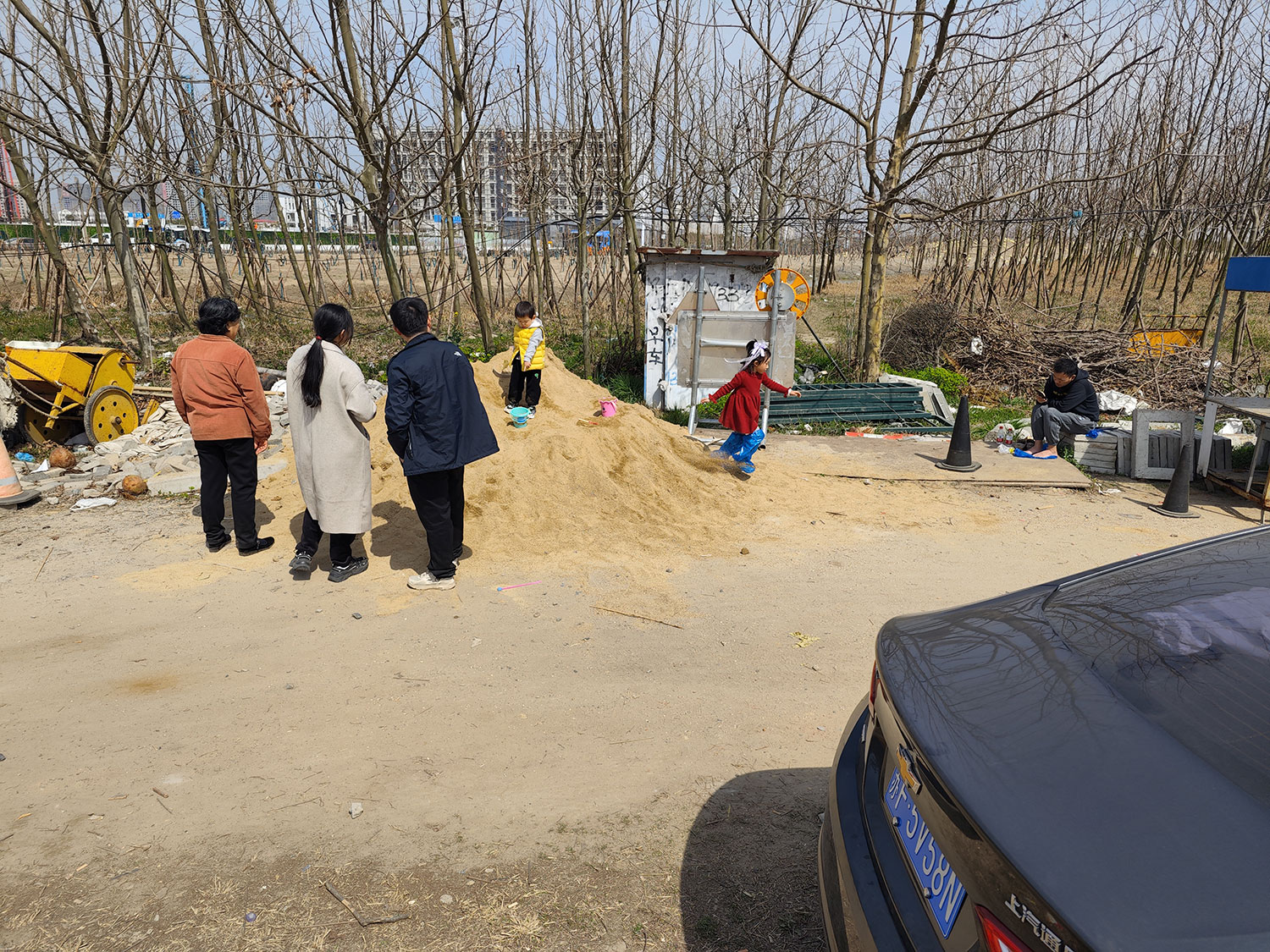
Don’t get me wrong. Chuansha is still big. 169.000 people live in Chuansha, 157.200 in Tangzhen. But it feels smaller than that. The best shopping malls, hospitals, and cinemas are all in the city center. If I want to take the high-speed way train, I first need to sit one hour in the subway.
When I go to Shanghai’s city center (inside the inner ring), people look visibly different. It’s striking. They’re beautiful, like as if I’ve gone to the first space in Hao Jingfang’s Folding Beijing. People downtown spend more on their haircuts, they wear brand clothing. Their pets are pure breeds and when they speak their accents are less thick.
But I feel more at home among nonfashion, cheap shirts with nothing on them or some poorly translated blabla. It’s like those comparison pictures of celebrities with and without make-up and special effects. I like this more. I prefer streetside kebab over a boring expensive restaurant that thought hard about how to display a big shrimp on an even bigger plate. I like people who are easily content with things. Uncomplicated. People share pictures of sunsets on their WeChat Circle.
David Fishman once said that Shanghai’s suburban districts would probably be called counties if Shanghai was a regular city, rather than its own province. Think of Taicang to Suzhou, or Xiangshan to Ningbo. They’re more like how I think a city should be. Highrises show man’s triumph over nature. But for what? Old buildings and nature are pushed out for modernization.
I don’t want downtown’s neatly trimmed parks with planted trees at exactly the same interval. Nature shouldn’t be revered like that. When we see nature as something separated from us, as something to be controlled to that detail, then nature in the suburbs will seem less remarkable. Why bother making a trip out, when the one near our house has garbage bins and a vending machine? I want to cycle past garden plots, over old bridges with fishermen. I want long roads without traffic lights that tire my legs, not my patience. Dark lanes without traffic lights. I want to stand among migrant workers and look at the Yangtze. I want space. And despite all of the big brands and development and amenities of downtown, these are the things that in Shanghai, you can only find outside of the outer ring.

